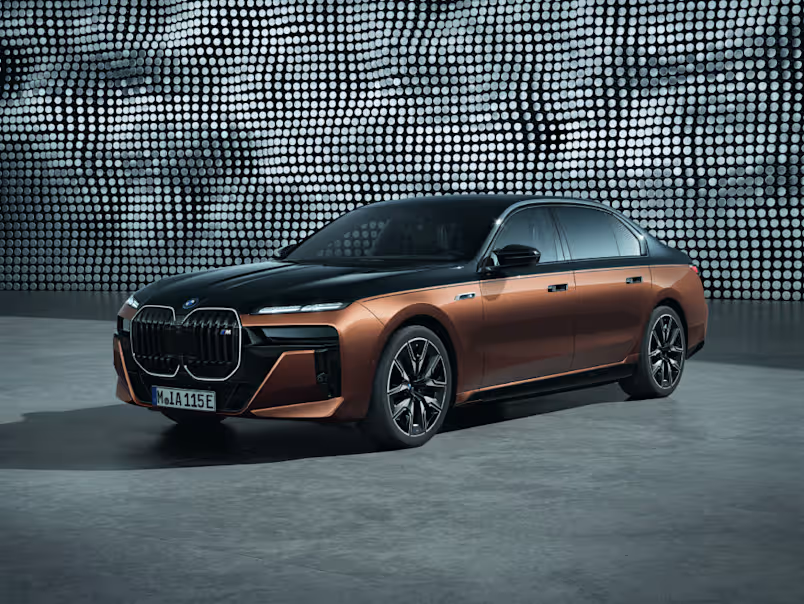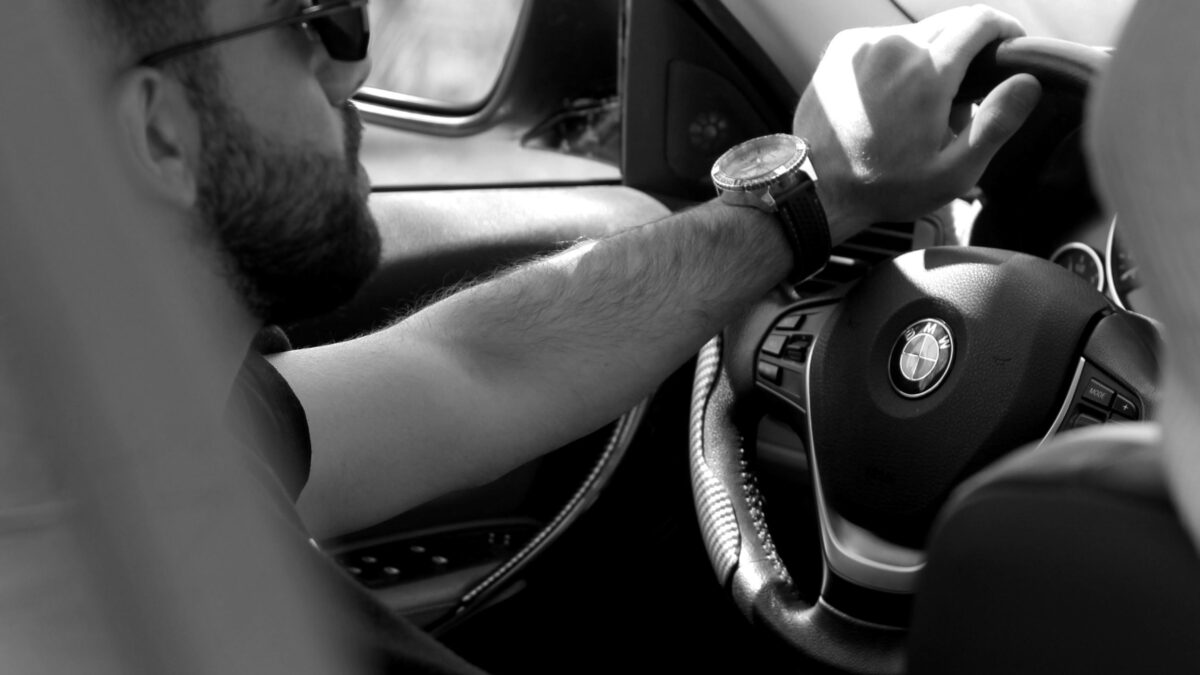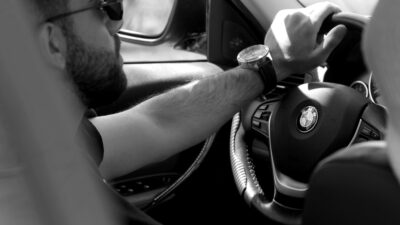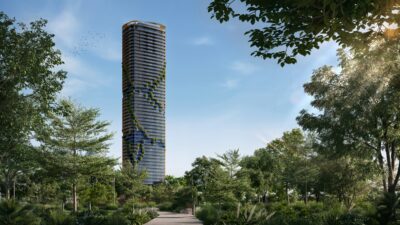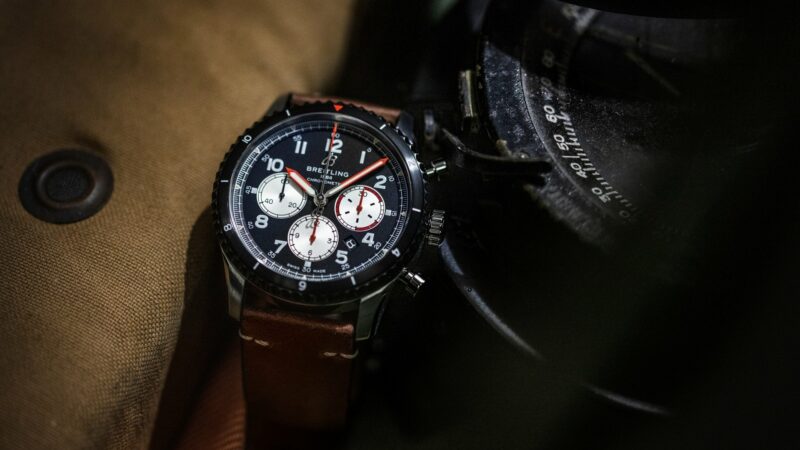
The Breitling Aviator 8 Mosquito Commemorates De Havilland’s Iconic Plane
The Breitling Aviator 8 Mosquito wears its dual design influences proudly: it recalls at once the design values of the onboard instruments designed by Breitling’s Huit Aviation Department and those of the Ref. 765 AVI – the Co-Pilot – whose bold look, rotating bezel, and impressive legibility with oversized Arabic numerals made it a favorite among aviators.
Breitling created the watch to honor the de Havilland Mosquito, a British aircraft whose lightweight wooden construction made it one of the fastest planes in the skies in the early 1940s. Breitling CEO Georges Kern says: “The de Havilland Mosquito is a truly unique and conic piece of aviation history. It was distinguished by incredibly innovative design and an ingenious use of materials. Our Aviator 8 Mosquito is an affectionate reminder of one of the world’s true aviation successes.”
The Breitling Aviator 8 Mosquito The Aviator 8 Mosquito features a 43 mm stainless-steel case and a black satin-brushed ADLC-coated stainless-steel bezel with a practical red pointer, indexes, and Arabic numerals. Its black dial has contrasting silver subdials – an indication of the Breitling Manufacture Calibre 01 in-house mechanical movement that powers the watch. This model has an ADLC treatment that provides an even darker tone than the regular DLC coating that has been such a popular feature on special Breitling watches for years – it is truly black in appearance as opposed to the anthracite shade that characterizes regular DLC. It recalls the night fighter adaptation of the de Havilland Mosquito.

 The eye-catching orange central hour, minute, and central second hands are coated with Super LumiNova®, making the watch legible in limited-lighting situations. Its striking red and orange accents recall the roundels and markings featured on the fuselage of the de
The eye-catching orange central hour, minute, and central second hands are coated with Super LumiNova®, making the watch legible in limited-lighting situations. Its striking red and orange accents recall the roundels and markings featured on the fuselage of the de
Havilland Mosquito and add to the watch’s allure. The hand of the small second subdial features a black varnish finish. The dial is completed with a date window between the 4 and 5 o’clock positions.
The Breitling Manufacture Calibre 01, visible through a transparent sapphire caseback, offers an impressive power reserve of approximately 70 hours. The COSC-certified chronometer is water resistant to 10 bar/100 meters. It is presented on a brown vintage-leather strap available with either a pin buckle or a folding buckle.
The de Havilland Mosquito Because of its mostly wooden construction, the British de Havilland Mosquito was an aircraft that served in a variety of roles. Built between 1940 and 1950, the “Wooden Wonder” was one of the fastest planes in the world – in fact, thanks to the wooden construction, it flew 20 mph faster than the famous Spitfire, which was equipped with the same engine.
Alistair Hodgson, the curator of the de Havilland Aircraft Museum in England, compares the de Havilland Mosquito to Breitling’s chronographs: “Breitling has played a pioneering role in the development of aviator chronographs, which fulfill multiple roles in a single package, and the Mosquito was the first aircraft to do the same thing: although it was originally designed as an unarmed light bomber, the original design was adapted to become a day fighter, night fighter, photographic reconnaissance aircraft, and even an airliner!” In 1940, during the Second World War, Lord Beaverbrook, the Minister of Aircraft Production, felt that plans to build the Mosquito should have been abandoned, but Geoffrey de Havilland was convinced of the aircraft’s potential and, with the support of Air Chief Marshal Sir Wilfrid Rhodes Freeman, continued the development and production of a plane destined to become an aviation classic in total secrecy. Alistair Hodgson says: “Military historians point out that while the Spitfire won the Battle of Britain, the Mosquito won the war.” The use of wood was an indicator of Geoffrey de Havilland’s insight and perception, as Alistair Hodgson notes: “He foresaw that the UK would have a shortage of aluminum. The Government wanted a light bomber for the RAF, and de Havilland offered them a plane made of a plywood and balsa wood composite that would have the performance of a fast lightweight fighter but be capable of carrying a bomber’s load.”
The de Havilland Mosquito performed with distinction throughout the 1940s, but, in the 1950s, jet aircraft technology came of age, and the heroic Wooden Wonder was retired. This extraordinary aircraft played a key role in the history of aviation, and Breitling is proud to commemorate a true legend of flight

